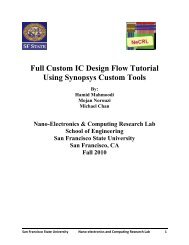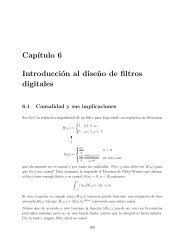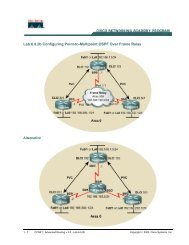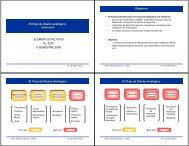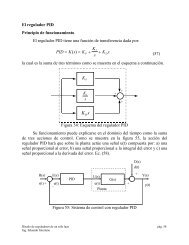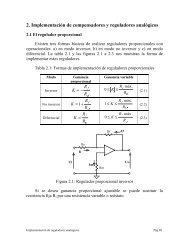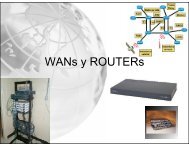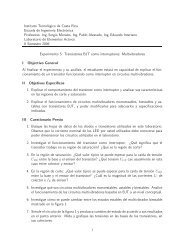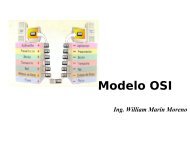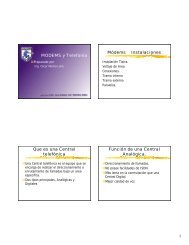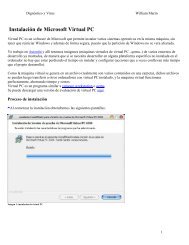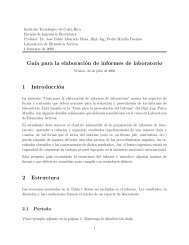Operating Manual for COMMUNICATIONS SERVICE MONITOR
Operating Manual for COMMUNICATIONS SERVICE MONITOR
Operating Manual for COMMUNICATIONS SERVICE MONITOR
Create successful ePaper yourself
Turn your PDF publications into a flip-book with our unique Google optimized e-Paper software.
Bail arm option<br />
Power requirements<br />
Fuses<br />
OPERATING MANUAL 2945A<br />
If the bail arm carrying handle is fitted, the Service Monitor will not fit into the optional Ever<br />
Ready Case, 46662/571. Do not attempt to attach the shoulder strap supplied with this Ever Ready<br />
Case to a Service Monitor fitted with a bail arm carrying handle.<br />
The Service Monitor can be powered from a wide range of power sources, both AC and DC.<br />
AC supplies must be within the range 90 V to 265 V, at a frequency of between 45 Hz and 67 Hz;<br />
or within the range 90 V to 132 V, at a frequency of between 45 Hz and 440 Hz<br />
The maximum power consumption is 190 VA<br />
Voltage selection is not necessary as the AC power supply module within the Service Monitor is<br />
designed to handle this wide spread of input variations.<br />
For DC operation, the Service Monitor requires a supply within the range 11 V to 32 V. A range<br />
switch adjusts the input circuits of the DC supply module <strong>for</strong> either 11 V to 20 V or 18 V to 32 V.<br />
The maximum DC power requirement is 100 W.<br />
The AC input circuit is fed through a single fuse fitted to the rear panel of the Service Monitor,<br />
within the AC input connector. This should be a 2 A anti-surge, 5 × 20 mm glass cartridge fuse.<br />
The DC input circuit is also fed through a single fuse. This is fitted within the fuseholder adjacent<br />
to the DC input connector. This should be a 10 A anti-surge, 5 × 20 mm glass cartridge fuse.<br />
Class I power cords (3-core)<br />
General<br />
Wire ended<br />
When the equipment has to be plugged into a Class II (ungrounded) 2-terminal socket outlet, the<br />
cable should either be fitted with a 3-pin Class I plug and used in conjunction with an adapter<br />
incorporating a ground wire, or be fitted with a Class II plug with an integral ground wire. The<br />
ground wire must be securely fastened to ground. Grounding one terminal on a 2-terminal socket<br />
will not provide adequate protection.<br />
In the event that a moulded plug has to be removed from a lead, it must be disposed of<br />
immediately. A plug with bare flexible cords is hazardous if engaged in a live socket outlet.<br />
Power cords with the following terminations are available from IFR Ltd. Please check with your<br />
local sales office <strong>for</strong> availability.<br />
This equipment is provided with a 3-wire (grounded) cordset which includes a moulded IEC 320<br />
connector <strong>for</strong> connection to the equipment. The cable must be fitted with an approved plug which,<br />
when plugged into an appropriate 3-terminal socket outlet, grounds the case of the equipment.<br />
Failure to ground the equipment may expose the operator to hazardous voltage levels. Depending<br />
upon the destination country, the colour coding of the wires will differ:-<br />
Country IEC 320 plug type IFR part number<br />
Universal Straight through 23424-158<br />
Universal Right angled 23424-159<br />
North America Harmonised<br />
Line (Live) Black Brown<br />
Neutral White Blue<br />
Ground (Earth) Green Green/Yellow<br />
GREEN/YELLOW<br />
EARTH<br />
BLUE<br />
NEUTRAL<br />
HARMONISED-WIRE ENDED<br />
46882-311D 2-3<br />
BROWN<br />
LIVE<br />
C3509




